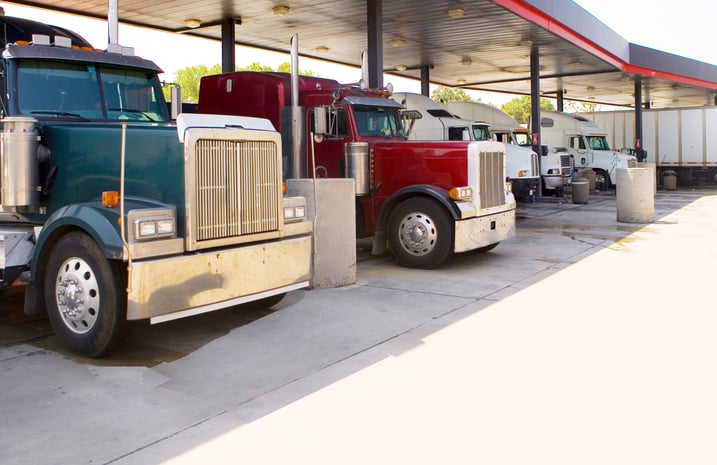“Expect the unexpected” has quickly become the national mantra since Donald Trump’s election, especially in industrial sectors. On the campaign stump, Trump was pro-coal and anti-climate change, putting him at odds with major initiatives enacted last year by the Obama administration. Myron Ebell, Trump’s pick to lead the Environmental Protection Agency (EPA), has a long history of being a naysayer on global warming, and Rick Perry, Trump’s choice to head the Department of Energy, once vowed to eliminate it if he was elected President. There’s no way to read these tea leaves, but his pending appointments send the signal that Trump is serious about dismantling the Obama administration’s recently approved fuel efficiency standards.

On October 25th the EPA released its Final Rule for Phase 2 of the Greenhouse Gas Emissions and Fuel Efficiency Standards for Medium- and Heavy-Duty Engines and Vehicles. The Rule Summary states the goals of new standards from the EPA and the Department of Transportation’s National Highway Traffic Safety Administration (NHTSA) are to improve fuel efficiency and cut carbon pollution to reduce the impacts of climate change, while bolstering energy security and spurring manufacturing innovation. It relies heavily on developing technologies to fuel economy standards for large trucks, buses and other heavy-duty vehicles, including tractor-trailers. The changes will impact five (5) percent of vehicles on the road, but those vehicles account for 20 percent of total fuel consumption and carbon emissions. The Final Rule states “the agencies are not issuing rules that effectively would turn these rules into a fuel program, rather than an emissions reduction and fuel efficiency program.”
Specifically, Phase 2’s performance standards cover model years (MY) 2018-2027 for certain trailers and model years 2021-2027 for semi-trucks, large pickup trucks, vans, as well as all buses and work trucks. The requirement summary tables for each vehicle class include examples of fuel optimization technology options available to help manufacturers meet the reduction standards as well as ABT flexibilities. The reductions are measured by vehicle fuel consumption and CO2 improvement. For the EPA, the form of the standard is CO2 grams/ton payload mile; for the NHTSA it’s gallons of fuel/1,000 ton payload mile. The specifics of the fuel efficiency standards are detailed below.
|
Class of vehicle: |
Final 2027 standard per vehicle fuel consumption and CO2 improvement: |
|
Combination Tractors and Vocational Vehicles |
4%–5% improvement over MY 2017 for diesel engines. |
|
Class 7 and Class 8 Combination Tractors |
19%–25% improvement over tractors meeting the MY 2017 standards. |
|
Trailers |
Between 3% and 9% improvement over MY 2018 baseline, depending on the trailer type. |
|
Vocational Vehicle Chassis |
Up to 24% improvement over MY 2017 standards. |
|
Heavy-Duty Pick-Ups and Vans |
16% improvement over MY 2018–2019 standards. |
If left in place, the current Phase 2 standards aim to reduce fuel consumption by 73–82 billion gallons of fuel over lifetime vehicle while reducing greenhouse gases by 976–1,098 million metric tons of CO2eq. According to the EPA and NHTSA’s analysis, the savings in fuel costs and the benefits of energy security far outweigh the investment costs by multipliers ranging from factors of 2 to 4, with paybacks coming between 2-4 years depending on the type/class of vehicle.
Many in the industry already have voiced support for the new fuel efficiency standards, accepting the scientific imperatives along with the long-term financial incentives and the benefits from technological advances to both the industry and the economy. While hybrids and electric- and hydrogen-fueled vehicles are still a potential fraction of the market at best and diesel still rules, few people are looking down the road and failing to see big changes ahead.
Staying on the current path, owners and operators of heavy-duty trucks will incur more up-front costs in the coming years and gain delayed but significant financial benefits achieved through technology-driven, increased fuel efficiency and optimized fuel delivery. Walking away from the Phase 2 fuel economy standards leaves the industry idling in place, while the rest of the planet drives forward.
Big questions remain: When it comes to fuel efficiency standards, what are the real goals of the Trump administration? How willing is the 115th Congress to trade the nation’s progress for short-term economic gains?


